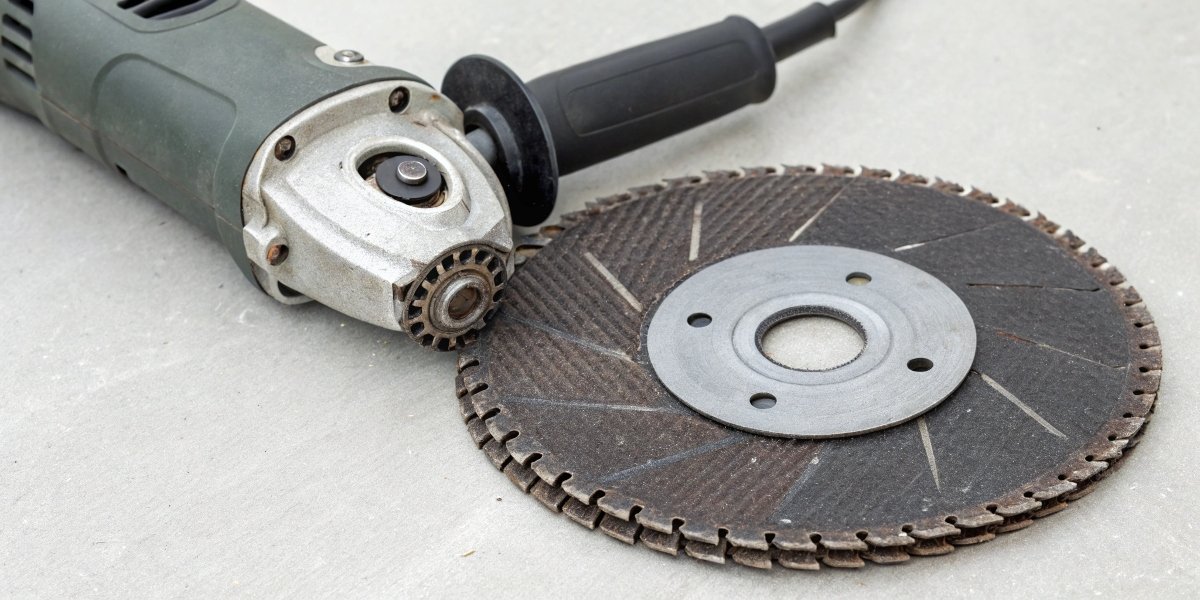
Are you unsure if you can put that thin cutting wheel on your powerful angle grinder? The fear of a dangerous mismatch can stop projects in their tracks, leaving you wondering if you have the right tool for the job.
Yes, metal cutting discs are specifically designed to be used on angle grinders. [1, 2, 3] It is the most common and effective way to cut metal, provided the disc’s size and RPM rating match the specifications of the grinder for safe operation. [1]
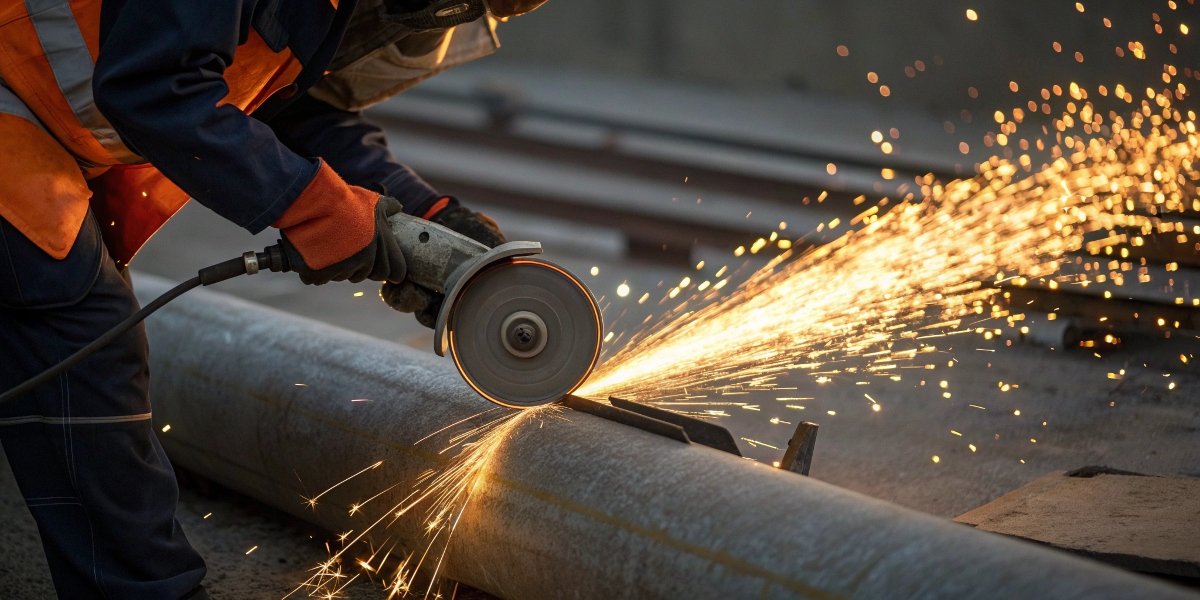
From my perspective as a manufacturer, the choice of cutting disc depends entirely on the material being cut and the cutting method1. This is a fundamental principle. The angle grinder2 is the power source, and the disc is the tool that does the work. They are a team. At Reliable (RL), we produce millions of these discs. We know they are made to be mounted on an angle grinder to cut everything from rebar to sheet metal. The important thing is matching the tool to the task and ensuring it’s done safely.
Can you put a metal cutting blade on an angle grinder?
Are you wondering if any blade that cuts metal will fit your grinder? Assuming all "blades" are the same is a critical error. This confusion can lead you to try dangerous combinations that the tool was never designed for.
You can and should use abrasive metal cutting discs on an angle grinder. [2, 3] However, you must never use a toothed metal-cutting saw blade on an angle grinder. [1] Angle grinders lack the guard and baseplate needed to control a toothed blade safely. [1]
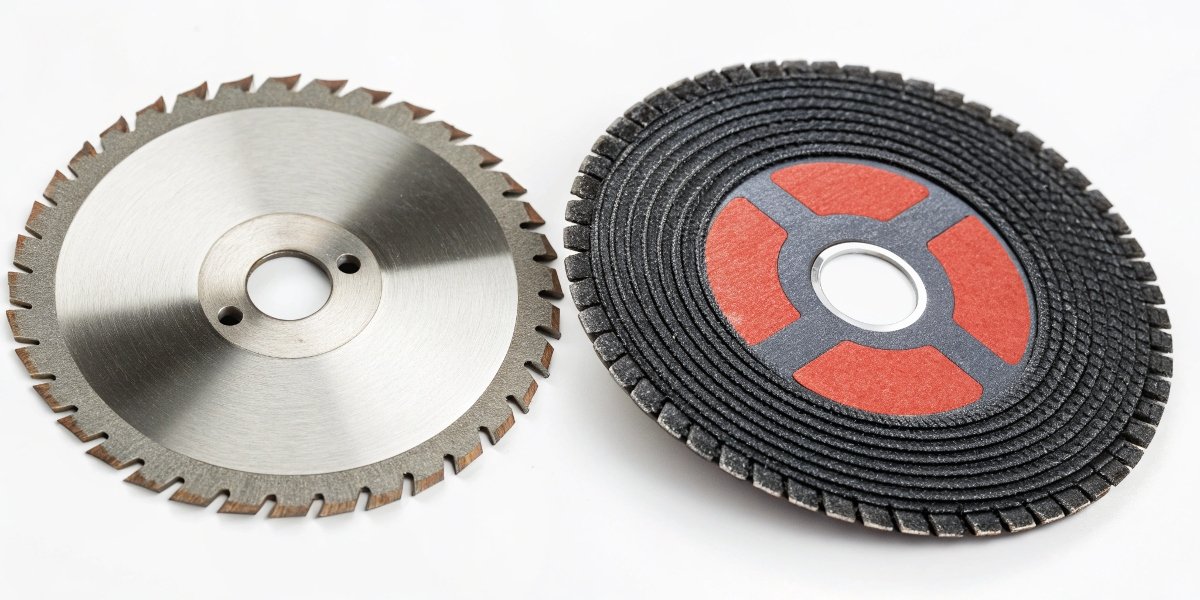
This is a safety distinction that I cannot stress enough. The tools may look similar, but they function in completely different ways. An abrasive cutting disc, which we manufacture, cuts by grinding away material with thousands of tiny, hard grains. It’s a friction-based process. A toothed saw blade, like one for a circular saw, cuts by chipping away material with large teeth. It is a much more aggressive action. Angle grinders spin at incredibly high speeds3, around 11,000 RPM, but they don’t have the rigid baseplate and guarding system of a circular saw. [1] If a toothed blade catches on the metal, it will violently kick the grinder back at the operator, which can cause severe injury. Always use the right type of accessory: an abrasive disc for an angle grinder, and a toothed blade for a saw.
What angle grinder disc cuts metal?
Staring at a wall of discs and feeling lost about which one to choose for metal? Picking a generic disc might get the job done slowly, but selecting the correct type ensures a faster, cleaner cut and a longer-lasting wheel.
The most common type is an abrasive cut-off disc made from aluminum oxide, which is excellent for cutting steel. [6, 11] For harder or more demanding jobs, a diamond cutting disc provides superior performance and durability for cutting dense metals. [4, 5]
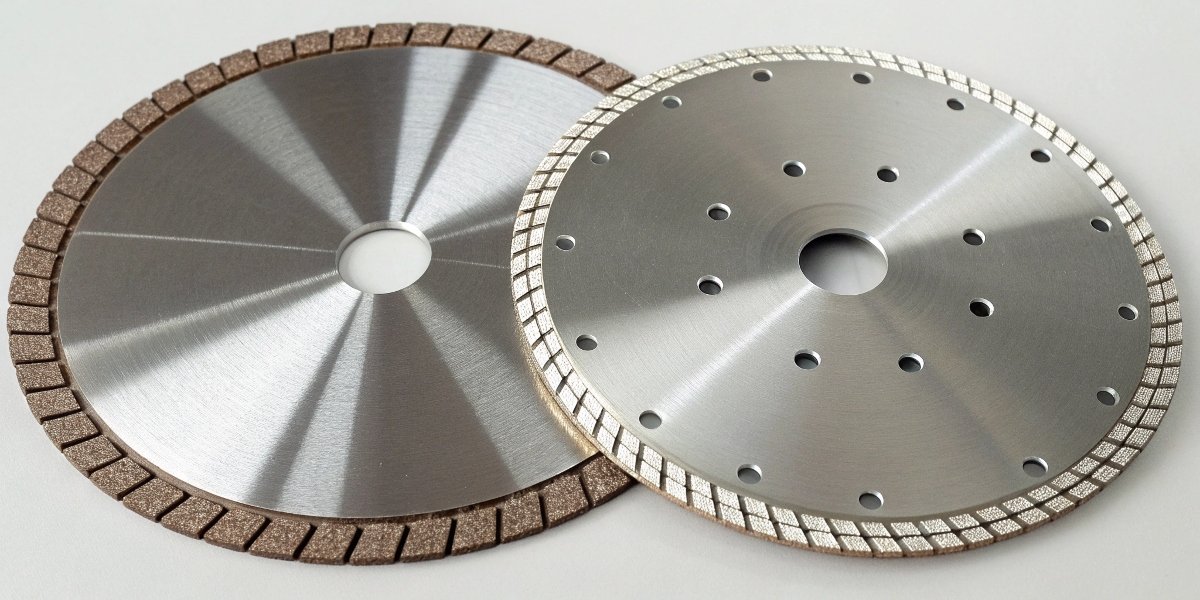
The choice comes down to the material and your budget. For most day-to-day metalworking with ferrous metals like mild steel or stainless steel, the standard bonded abrasive cutting disc is the perfect choice. [2, 11] These are typically made from aluminum oxide4 grains and are identified as "Type 1" or "Type 41" for their flat shape. [3, 6] They offer a great balance of cutting speed and cost. For your B2B needs, this is the high-volume workhorse. However, when you need to cut very hard, thick, or abrasive metals, a diamond cutting disc5 is a major step up. [4, 5] Instead of abrasive grains that wear away, these wheels have a steel core with industrial diamond particles fused to the edge. They last much longer and cut more consistently, but their initial cost is higher. The selection is a business decision: bonded discs for general use, diamond discs for high-performance specialty applications.
Can a cutting disc be used for grinding?
Have you just finished a cut and want to quickly smooth the edge with the same disc? It is very tempting to just tilt the grinder and use the side of the thin cutting disc to deburr the metal. This is a very common but extremely dangerous habit.
No, you should never use a thin cutting disc for grinding. [8, 9, 13] Cutting discs are thin and have only one layer of reinforcement. Applying side pressure can cause them to bend, shatter, and explode, posing a severe risk of injury. [8]
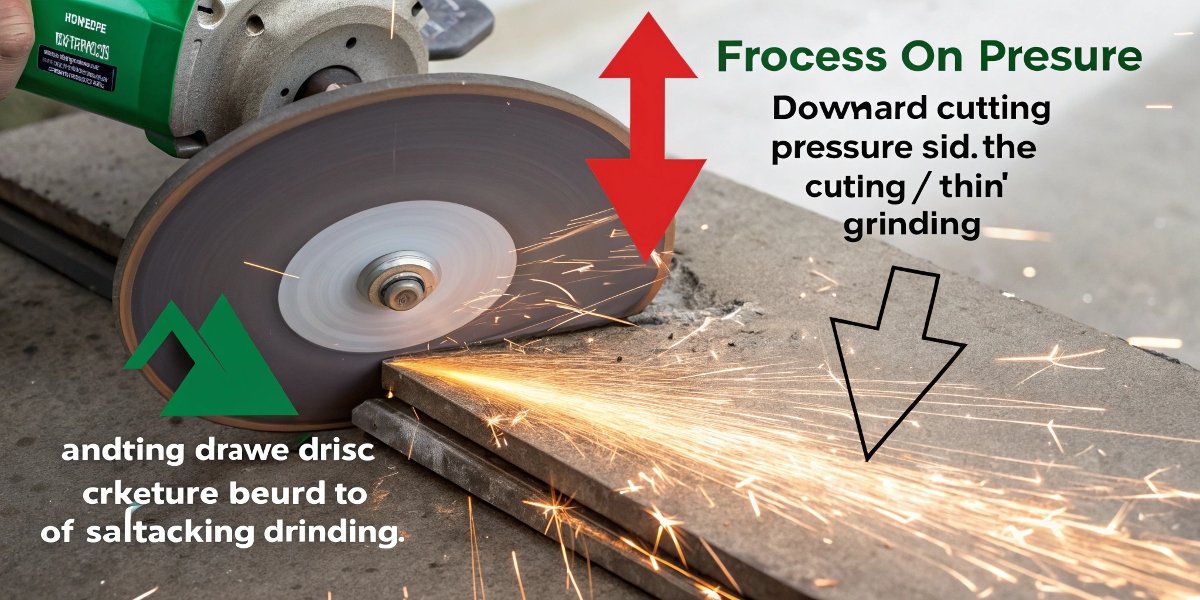
The structure of these discs is key to understanding this rule. A grinding wheel6 is thick and has multiple layers of fiberglass reinforcement, making it strong enough to handle lateral (side) pressure. [8] A cutting disc is different. It is engineered to be as thin as possible to remove the minimum amount of material for a fast, clean cut. [2, 3] To achieve this thinness, it has far less internal reinforcement, usually just one or two layers. [8] When you apply pressure to the flat side of that spinning disc, you are flexing it in a way it was not designed for. This stress can instantly cause a catastrophic failure. The disc can disintegrate at 11,000 RPM, sending sharp fragments flying. Always take the extra 30 seconds to switch to a proper, thicker grinding wheel7 for any grinding or deburring task.
Will a metal cutting disc cut tile with an angle grinder?
Do you have one last tile to cut and only a metal disc on hand? It seems like a powerful abrasive should cut through ceramic, but this is a case where the wrong tool will fail spectacularly and could be dangerous.
No, a metal cutting disc should never be used to cut tile. [15] The bonded abrasive material is not designed for masonry and the disc will wear down almost instantly, break apart, or shatter. The correct tool is a diamond blade specifically designed for tile or masonry. [15, 16]
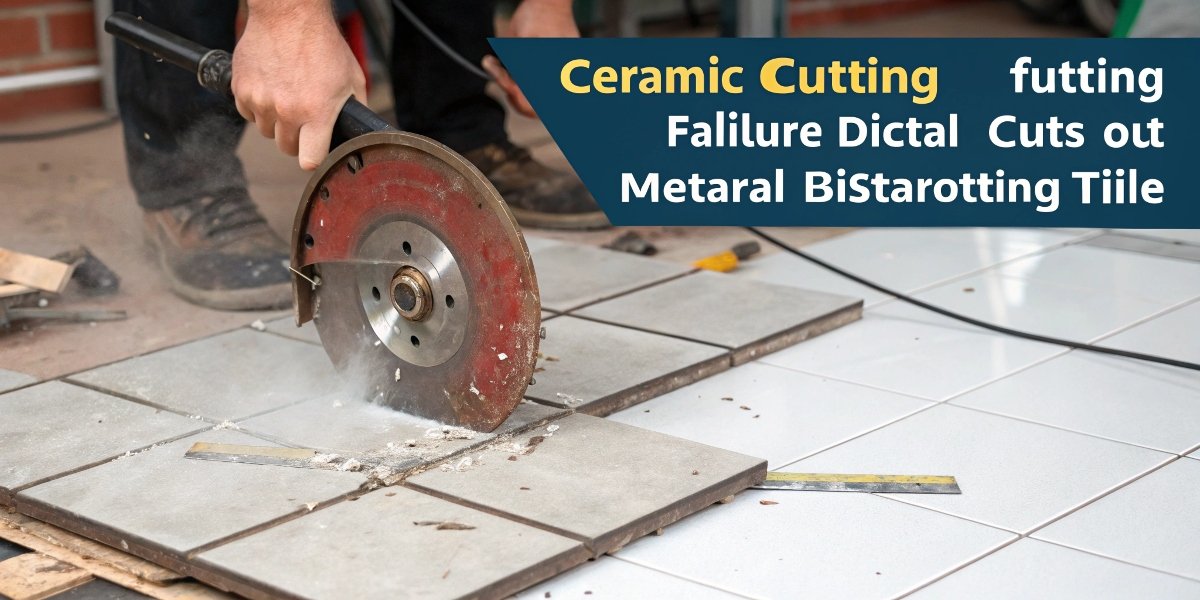
My expertise in abrasives makes this very clear. The materials are completely different. Metal cutting discs use abrasives like aluminum oxide, which are bonded in a way that is effective on ferrous metals. Ceramic tile is extremely hard and abrasive in a different way. When you try to cut tile with a metal disc, the tile acts like a dressing stone, ripping the abrasive grains from the disc’s bonding agent. [15] The disc will disintegrate in seconds without making any real progress on the cut. It is inefficient and creates a significant risk of the disc breaking. To cut tile properly with an angle grinder, you must use a diamond blade8. Diamond is hard enough to grind through the ceramic material, and these blades are constructed with a solid steel body that is much safer for cutting hard masonry products. [14, 16]
Conclusion
Angle grinders and metal cutting discs are a perfect match for cutting metal. However, you must always use the right type of disc—abrasive, not toothed—and never use a thin cutting disc for grinding or for cutting materials like tile.
-
Learn about various cutting methods and how to choose the right one for your project. ↩
-
Learn about the mechanics of angle grinders and their versatility in metalworking. ↩
-
Understand the dangers associated with high-speed tools and how to mitigate them. ↩
-
Find out why aluminum oxide is a popular choice for cutting discs and its advantages. ↩
-
Explore the superior performance of diamond cutting discs for tough metal cutting tasks. ↩
-
Understand the key differences between cutting discs and grinding wheels for safe usage. ↩
-
Discover the importance of using the right type of wheel for grinding to ensure safety. ↩
-
Learn about the applications of diamond blades and their advantages in cutting hard materials. ↩
Written by
leeon
You may also be interested in:

How do you cut bolts with an angle grinder?
Struggling to make a clean cut on a stubborn bolt? Using an angle grinder can feel intimidating, but it is a fast and effective method
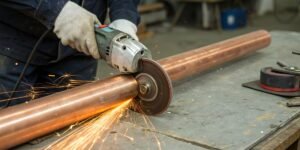
Can I use an angle grinder to cut a copper pipe?
Struggling with a quick copper pipe cut? Worried about damaging the material? An angle grinder is a fast solution, but using it wrong can be
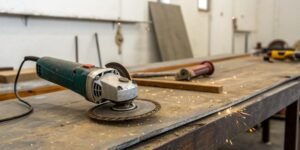
Can an angle grinder cut meat and bones?
Struggling to cut tough bones? Thinking of grabbing your angle grinder for a quick solution? This powerful tool seems like an easy answer, but it’s
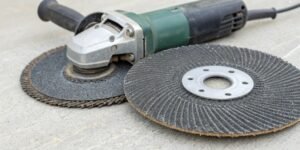
Can a metal cutting disc be used on an angle grinder?
Are you unsure about putting a metal cutting disc on your angle grinder? Using the wrong tool combination is a real safety hazard. But with
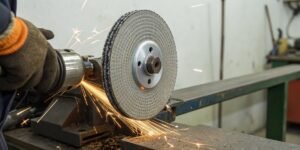
What is the best grinding wheel for cutting aluminum alloys?
Struggling to cut aluminum without your grinding wheels clogging up? This common problem wastes time, ruins your workpiece, and drives up costs, turning a simple

What does an angle grinder do that other tools can't?
Struggling with tools for multiple tasks? Carrying a heavy toolbox is inefficient. An angle grinder replaces many tools, saving you time and effort on the
